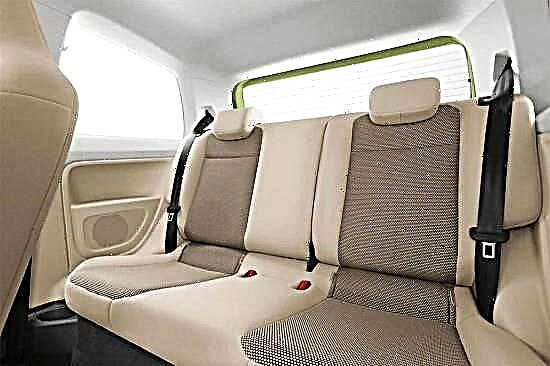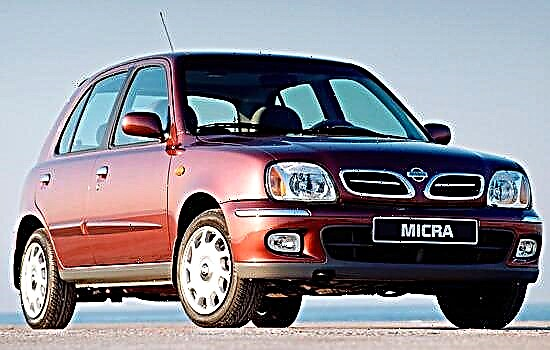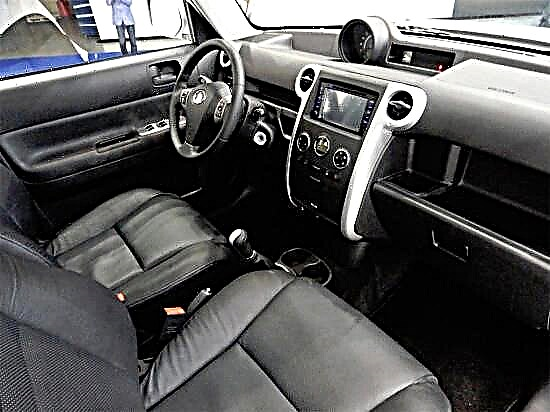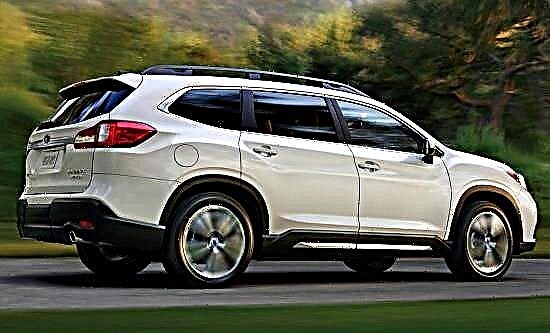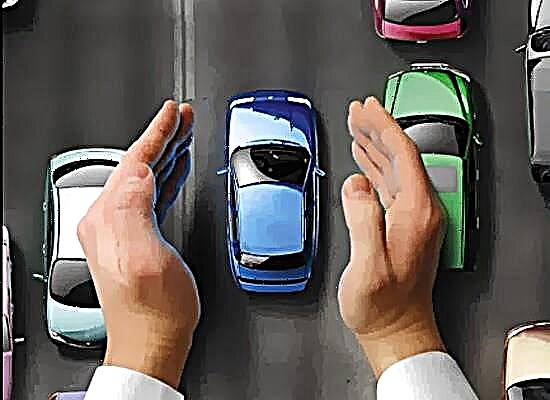Auto insurance is an umbrella term for land transport insurance services (excluding rail and other special types of land transport). We will try to explain the topic of car insurance as briefly and succinctly as possible.
Let's start by listing the existing types of car insurance:
- OSAGO - this is compulsory motor third party liability insurance, no car can do without this type of car insurance.
Insured events of OSAGO: damage to property and / or health of third parties.
The OSAGO rules, briefly, read as follows: "The insured event is the infliction, as a result of a road traffic accident (during the period of the compulsory insurance contract), by the owner of the vehicle, damage to the property, health or life of the victim, which entails the obligation of the insurer to make an insurance payment" ... Of course, a huge list of exceptions is listed in the rules of a particular agreement, which should be paid special attention to. - DSAGO - additional civil liability insurance.
This type of insurance compensates for damage to the property and / or health of third parties in excess of the maximum payments for compulsory motor third party liability insurance (insurance companies, as you know, do not pay more than 400,000 rubles for "car insurance"). Accidents from several cars are not uncommon, and in this case, without DSAGO, the culprit will have to independently cover the "remnants" of the damage. - CASCO - this is an insurance contract that already applies to your car.
Under CASCO you can insure a car against damage and / or theft. CASCO insured events, as a rule, include theft of a vehicle by means of robbery, theft, robbery, fraud and / or damage as a result of fire, traffic accident, falling objects, natural disaster, actions of animals or intruders. The insured amount of CASCO, as a rule, corresponds to the market value of the car.
In case of concluding a CASCO agreement, you should immediately find out what will not be included in the insurance. For example, damage to a car as a result of the driver's negligence when using fire or smoking does not apply to CASCO insurance events. It will not be possible to obtain compensation if keys are lost, license plates or equipment (not included in the factory set) are stolen. - Accident insurance - this type of insurance includes injuries and / or injuries leading to a deterioration in the health of the injured, disability or death.
You can insure your health in two systems - the system of places and the lump-sum. With the system of seats - each seat in the car is insured for a certain amount. With a lump-sum insurance system, the entire interior of the car is insured, and payments are made by dividing the total insured amount by the number of victims. - Green map - a type of car insurance in the Schengen countries, similar to the Russian OSAGO. Those. This is a compulsory type of car insurance in Europe, for damage to property and / or health of third parties abroad (all Schengen countries). That is, if you are going to travel by your car across Europe, you will have to take care of purchasing this insurance.
The feasibility of car insurance and its cost.
In terms of the expediency of car insurance, everything is very simple - any repair of medium severity will cost you an order of magnitude more expensive than insurance for a year. Let's roughly estimate - the cost of a full CASCO in Moscow is ~ 12%. With a car cost of ~ 400,000 rubles, this is ~ 48,000 rubles. Now let's look at the statistics: on average, 41 accidents occur in Moscow alone per day (summary statistics for 2007). the likelihood of getting into a minor accident is real. It's good if you need a simple repair (wing repair, bumper and / or headlight replacement, bonnet repair, painting elements, plus materials and work) - roughly 35,000 ~ 50,000 rubles (a lot depends on the level of damage, station prices, cost of spare parts and “ the mood of the masters ... well, nevertheless, rough). Now see if insurance is profitable for you. Do not forget that every day someone knocks the doors in the parking lot or an inattentive driver clings to someone else's bumper. Of course, you can put up with minor damages, in the absence of insurance, but with serious problems, repairs cannot be avoided.
And do not just rush into arguments about how accurate and attentive you are - if you have driving experience, it is not for us to explain to you that on the road, a lot does not depend on you.
Having insurance (by the way, we are still talking about CASCO, OSAGO to discuss - there is no particular sense - this is compulsory insurance), you do not need to torment yourself with the choice of "economy or quality" - to put original or non-original spare parts, go to a specialized station or "to garages" ... Insurance covers everything - you need to choose quality. In general, it is worth insuring a car, the question is “how much does it cost to insure a car?” how to choose the cost of car insurance, more on that ...
But the cost of car insurance is an individual question. The fact is that each insurance company has its own methods of determining insurance rates. When determining the cost of the CASCO policy, the main criterion is the cost of the insured car, because the price of a car directly affects the amount of insurance payments. Secondly, the cost of the policy is influenced by: the age of the car owner and his driving experience (insurance companies believe that the more experienced the driver, the less likely an insured event will occur).
Also, the price of the CASCO policy will be affected by the size of the “deductible” (the amount that you will have to pay on your own in case of “minor troubles”).
A good way to save money on car insurance is to insure cars "wholesale", ie. to acquire several policies at once: CASCO + OSAGO, maybe also from an accident.
In the case of insuring a used car, it is more difficult to save money - insurers, when determining the sum insured, often underestimate the cost of such cars. As a rule, it is considered that in the first year the car loses 1/5 of its value, in the second year - 15% of the cost, and for all subsequent years - 10% each. So the owners of old cars can only be advised to carefully study and compare the offers of different insurance companies - they differ significantly. Basically, foreign cars no older than 7 ~ 9 years old and domestic cars no older than 5-6 years old are accepted for CASCO.
With tariffs for compulsory motor third party liability insurance, everything is simpler - they are established by the government and depend on the power and type of the car, the territory of its use, the presence of previous payments, the age and experience of the driver, as well as the period of use of the vehicle. Therefore, the price of OSAGO is approximately the same everywhere.
The same story is with the “Green Card” in Europe - the programs may differ, but the tariffs are established by law.
The cost of accident insurance largely depends on the type of insurance and the sum insured - all this is determined by agreement of the parties.
Additional equipment of the car, insurance companies insure only when buying a hull insurance. The insurance price is 10 ~ 15% of the market value of the insured equipment.

More specifically about what they are insuring against.
All risks can be grouped into two groups:
- damage:
- Accident - any accident (through your and not through your fault, with or without participants, with cars or other objects, pedestrians ...)
- fire, spontaneous combustion, explosion - damage to the car in the listed cases (this includes fire due to a short circuit in the car's wiring)
- natural disasters are more real than they seem, an event - for example: hail, heavy rainfall ... this includes any damage to a car as a result of such events
- illegal actions of third parties - vandals, hooligans, drunken brawlers, etc.
- external influence - icicles from roofs, stones in glass, trees “on the road”, etc., as well as various animals (from a mouse to an elephant)
- illegal acquisition:
- hijacking
- theft
- damage as a result of attempted theft or theft
How to insure, what to choose?
There are a number of options in car insurance that affect both the cost of insurance and the amount of insurance benefits. Therefore, the choice of these options must be taken very seriously.
To make it easier to compare the conditions offered by different insurance companies, it is best to highlight a few main “options”. Actually, look for them in insurance contracts:
- What is an insured event - it is important what exactly the insurance company considers an insured event and for what it pays money. This includes insurance risks and situations in which the insurance company pays compensation (described above: traffic accident, fire, flooding, falling objects, etc.).
- Exclusion from insurance events - these are cases when the insurance company does not make payments. For example: a cut of a tire without other damage to the car will not be an insured event, or theft of wheels, or a short circuit without a fire.
- Restrictions - these are situations when the insurance company restricts you in receiving insurance benefits. For example, if you have exceeded the permitted speed, the company may refuse the insurance payment or reduce its amount. The same applies to: driving while intoxicated, driving without rights, or with rights of an inappropriate category ...
- Calculation of the amount of compensation - the most important and "slippery" moment in insurance. The insurance contract must contain schemes for determining the amount of compensation by the company (according to expertise, according to its calculation, according to the account of your service station, according to the account of your service station ...). What payment options are acceptable: in cash at the cash desk, by transfer to the service station account or to the client's account. And also the options for calculating the amount of compensation in the event of a complete loss of the car (or its theft) are special situations and it is very important how the insurance company will calculate the amount of payment in this case.
- Franchise - the amount of money that the insurance company will not pay you. For the insurance company, this is cutting off minor losses. For you - the amount that is not worth starting a "showdown" with the insurance company and the same amount will affect the cost reduction of the insurance policy.
The larger the deductible, the lower the cost of the insurance policy. This can be a% of the value of your car (but not of the amount of damage) or a specific amount - for example, 3000 rubles. Please note that a number of insurance companies provide a separate “driver's fault” (ie in case of an accident caused by your fault). This deductible is usually more than the standard damage deductible. But the most unpleasant thing about this is that, in some cases, you have to wait for a court decision so that the insurance company makes a payment, keeping the corresponding deductible.
Now how to act in case of an accident.
- Call the traffic police officers to the scene of the traffic accident.
- Drivers involved in an accident must fill out an accident notification form indicating the addresses and names of eyewitnesses.
- Fill in a notice of an insured event (the form given to you by the insurance company when concluding an insurance contract).
- The driver responsible for the accident is obliged to inform other participants in the accident who intend to file a claim for damages, information about the compulsory insurance contract (including the number of the OSAGO policy, name, telephone number and address of the insurance company). Participants must write down this data.
- A traffic police officer, at the scene of an accident, is obliged to draw up a protocol on an administrative offense indicating the guilty person and the paragraph of the traffic rules he violated. The victims are given a copy of the protocol. All participants in an accident are issued a certificate in form 12, indicating information about the driver, vehicle, as well as damage to the vehicle.
- It is necessary to carefully check the visible damage to the vehicle entered in the above certificate and, if any missing ones are found, indicate them to the traffic police officer, make sure that the shortcomings are eliminated.
- The insurance company, at its request, is provided with a certificate from the traffic police in form 31, indicating information about all participants in the accident, vehicles and their damage. The request is handed over to the victim, when submitting an application to the insurance company. In the traffic police you need to get a copy of the decision on an administrative offense.
- An application to the insurance company must be submitted within 5 working days.
- Before the insurer inspects the damaged vehicle, it is impossible to repair the car, since the expert of the insurance company draws up an inspection report indicating the damage to the vehicle, on the basis of which the amount of insurance compensation will be calculated.
Receiving insurance payments.
According to the law, you will have to wait a maximum of 15 working days for compensation from the moment you submit your application and submit all the necessary documents. The countdown starts when you provide the last paper, but you are not required to submit all documents at once - the rules allow installments.
Within 5 working days from the date of application, your car must be examined. Otherwise, you have the right to demand an examination “at home” without providing the car to the insurer.
A delay in time due to the fault of the insurer will bring you additional compensation, which must be required, regardless of the amount of payments.
The sum insured may turn out to be significantly lower than expected by you and even set by an expert. If we are talking about a real understatement of the cost, and not about an expert's mistake, you can safely go to court (of course, first you should try to solve the problem peacefully by sending a pre-trial claim to the insurance company).
If the insurance company completely unreasonably refused to pay you, then here you need to deal directly with the insurer. The algorithm of actions is the same: a pre-trial claim - a statement of claim in court. Only first, you should carefully study the rules of insurance of your insurance company - perhaps the insured event that seems to you "typical" is not considered as such in the company.
Pitfalls in auto insurance.
- The insurance broker is not liable for CASCO. Therefore, when choosing a company, it is better to call the customer service department and clarify all the information of interest.
- The CASCO agreement consists of a policy and annexes. Pay attention to the applications - they may contain important additions.
- Hidden franchise - usually referred to in “small letters” in the annexes to the contract. There, for example, it may be prescribed that the insurance company covers only two insured events per year.
- A vague definition of the concepts of "hijacking", "fire," "damage" ... For example, if a car is set on fire, then it can be called not a fire, but arson.
- The broker must have a power of attorney to conclude a contract or a representative of the insurance company who has the right to do so must sign it. Otherwise, the contract with the insurance company will be invalid.
- The insurance contract may indicate that the insurer has the right to refuse payment if maintenance is not completed in due time.
- Not all parking lots have the legal status of a protected parking - an important point.
- In the event of theft, the insurance company has the right to postpone the payment time by 2 months by organizing its own search for the stolen car.
- Insurers wait 15 business days for documents.A certificate from the competent authorities can take even longer.
- Carrying out repair work in “own” (company) car service. At the same time, the quality of work in this car service may be far from the best.
- Payment of the cost of spare parts taking into account their wear and tear - this can significantly reduce the amount of insurance premium.
- Fixing the cost of the "standard hour" in the contract - when the cost of services rises, you will have to pay the difference out of your pocket.
- Sometimes, in the paragraph on payment for repairs, you can find a footnote stating that it does not include the cost of work or, conversely, the cost of spare parts.
Simply put, in order to avoid unnecessary problems, we recommend that you, before signing, take the insurance contract home - where you slowly and carefully read it. Serious and honest insurance companies will never refuse you.



